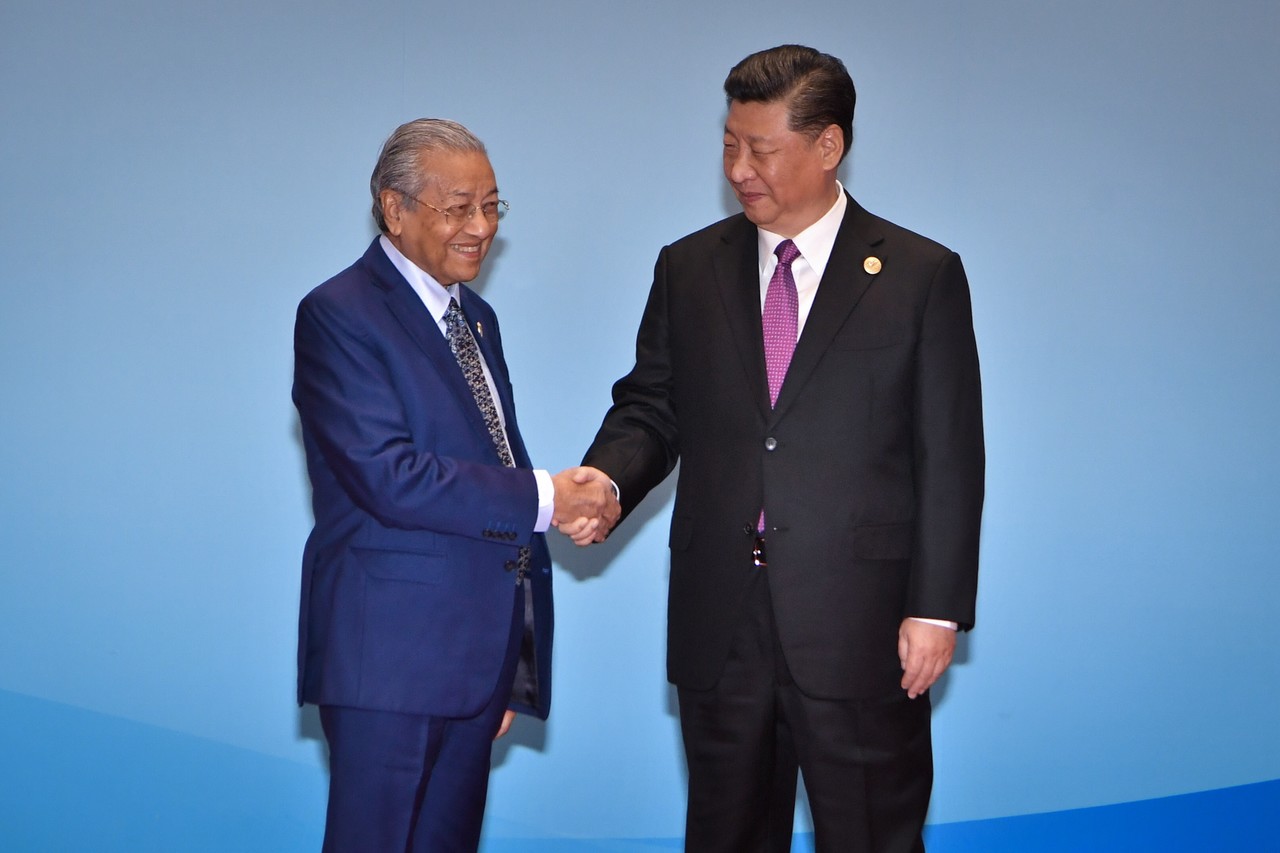By Mohd Haikal Mohd Isa
BEIJING, April 29 (NNN-BERNAMA) — When the Belt and Road Initiative (BRI) was first proposed by Chinese President Xi Jinping (right), sceptics viewed it as yet another geopolitical ploy by Beijing to project its growing military and political power on the world stage.
Six years on, the BRI has gained growing acceptance among countries, including the western developed nations which had ignored the criticism about it being nothing less of China’s debt trap diplomacy, to boost connectivity and establish new trade routes with Beijing.
What began as a Beijing-led initiative has truly become a major infrastructure drive the world has never seen since the end of the Second World War.
With better connectivity, the BRI could potentially alter the way global business and trade are conducted.
Prime Minister Dr Mahathir Mohamad (left) who was among the selected leaders given the honour to address the just-concluded Second Belt and Road Forum for International Cooperation, has vowed Malaysia’s support on the infrastructure initiative.
“Yes, the Belt and Road idea is great. It can bring the landlocked countries of Central Asia closer to the sea. They can grow in wealth and their poverty reduced. Everyone will benefit from the ease of travel and communication and the development of the Belt and Road project will bring.
“I am fully in support of the Belt and Road Initiative. I am sure my country, Malaysia, will benefit from the project,” the 94 year-old-leader said in his speech during the high-level meeting of the forum on Friday.
The Prime Minister joined leaders from 37 countries and more than 5,000 representatives from 150 countries in the forum.
He also met Xi and his counterpart Premier Li Keqiang prior to the forum opening, which further cemented the strong bilateral ties between Malaysia and China.
Dr Mahathir who described the forum as ‘most important forum’ also said: “As trade drives the world today, it is only natural that the land and sea passages have to be better developed.”
Without a doubt, he said the utilisation of these passages under the BRI would enrich all the littoral states along the way, as much as the great nations of the East and West.
Malaysia, being one of the most strategic littoral states straddling along the Belt and Road routes is on the cusp of becoming one of the biggest beneficiaries from the infrastructure project.
With the East Coast Rail Link (ECRL) project back on track, albeit a much-reduced cost to serve as a land bridge for goods between the Straits of Melaka and the South China Sea, the country could expect increase investments not only from China but other countries too.
Besides the ECRL, the China-Malaysia Qinzhou Industrial Park and the Malaysia-China Kuantan Industrial Park are also growing rapidly.
China is Malaysia’s largest trade partner for a decade with the total trade between the two countries last year jumping more than eight per cent to RM313 billion and with better connectivity, the bilateral trade could swell further.
Since its inception six years ago, more than 124 countries and 29 international organisations have signed BRI documents with China with the trade volume of goods between signatories has reached US$6 trillion.
China’s direct foreign investment in the signatories’ countries had exceeded US$80 billion creating 200,000 jobs in the domestic economy. (photoBERNAMA)
— NNN-BERNAMA






